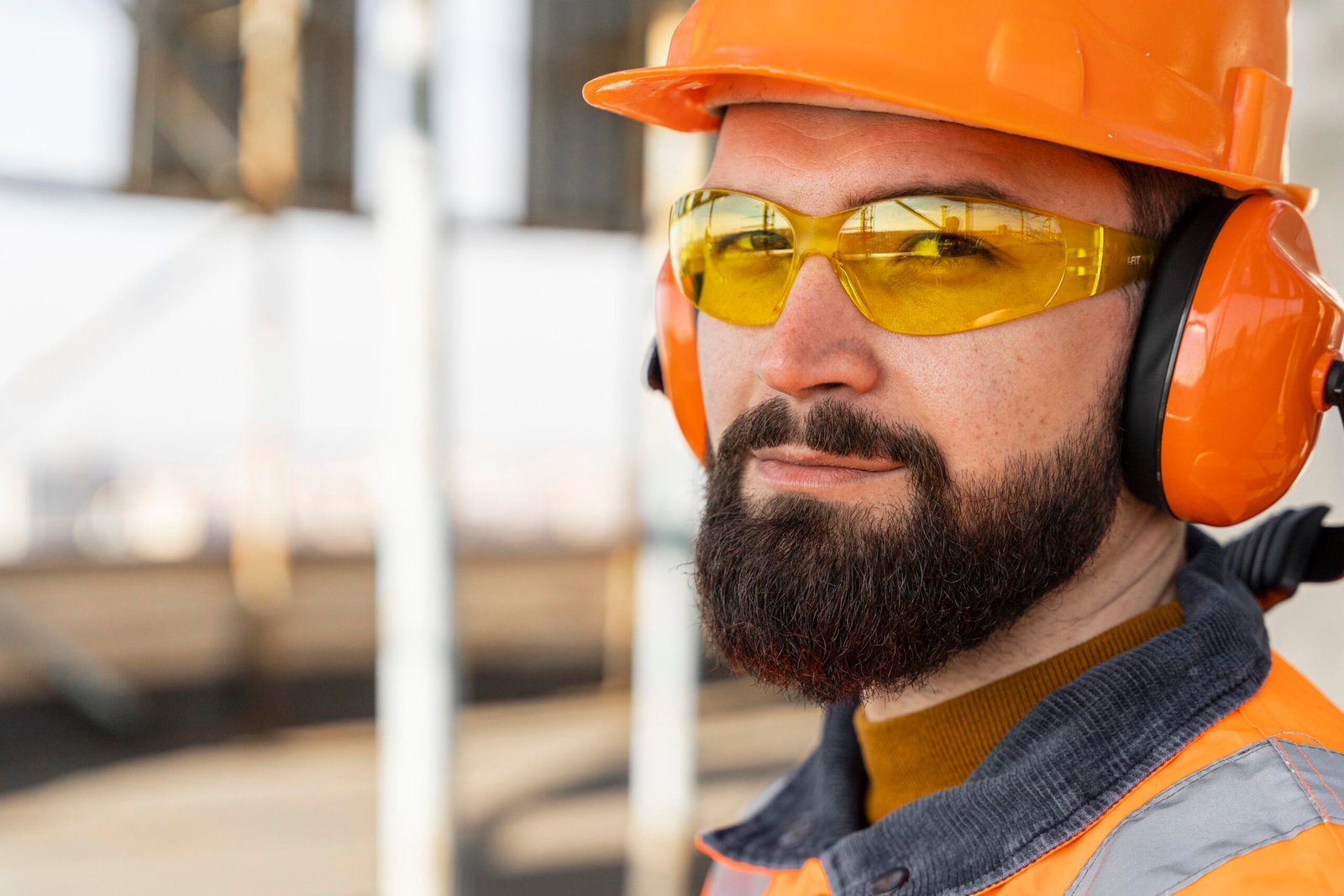More focus should be on offering a PPP that suits everyone correctly for optimum coverage and efficiency as the workforce becomes more diverse. When it comes to most PPE, such as gloves, clothes, or boots, standard sizing is sufficient.
Though many safety administrators are qualified to fit safety glasses appropriately, they are one of the most difficult types of safety equipment to fit due to the significant variations in facial shape between males and females and women of different ethnicities.
There are significant risks associated with providing employees with ill-fitting eyewear. Safety eyewear holes allow debris to enter the eyes, and sliding, condensation, and pain cause employees to become disengaged, produce less, or even take off their spectacles.
Consequently, ninety percent of eye injuries can be prevented by wearing safety glasses therefore, it’s crucial to understand how important it is to get each worker fitted for the best possible fit. To support safety eyewear compliance and stop the more than 700,000 eye injuries that occur in the USA each year, let’s look at innovative techniques that safety eyewear uses to give a better fit.
Not everyone fits into one size
Although the number of accidents has decreased as a result of enhanced national safety laws and the creation of protective eyewear, there is still much room for improvement. There is growing awareness of the negative effects of wearing uncomfortable glasses.
Consequently, a great deal of focus has been on finding solutions to the fitting requirements for today’s diverse workforce in the previous few years. Several research and development efforts have produced advanced eyewear designs that account for differences in size.
In addition, they modify the overall size and shape of the head as well as the location of the ears, cheekbones, and nasal bridges. Safety managers are aware of the need for gap-free safety, especially in situations with significant risks.
But keep in mind that a gap-free, fit design for one worker can be an unsuitable and dangerous one for another. If the people working for you are not all of the same gender or ethnic background, then one-size glasses might not be sufficient to ensure everyone is safe.
Modern prescription safety glasses models that instantly fit up to 85% of workers without the need for adjustments have been created thanks to new designs that are based on in-depth facial profile research. To determine which design and dimension is optimal for each member of the remaining workforce, follow the relevant suggestions.
Choosing the appropriate fit
One of the main causes of eye injuries is large gaps between the wearer’s face and their protective eyeglasses, which allow debris to enter the eye area. When eye injuries reach concerning proportions, many companies neglect to update their policy for protective eyewear. Progressive employers, on the other hand, recognize how critical it is to provide each employee with the right eyewear right away. An effective way to ensure that the workforce’s maximum allowable gap is maintained is through personal fit examination.
Thinking about eyeglasses with adjustment options is a great place to start after fit testing. Adjusting the temples may fill gaps in the face and provide a more personalized fit. For more airflow and coverage, certain flexible temples may also allow you to modify the lens angle.
Modern hybrid eyeglass designs have closed alternatives and interchangeable temples for improved, gap-free performance akin to goggles. Despite accounting for almost half of the workforce, women are still underrepresented in the protective eyewear market.
Because female employees tend to have smaller, narrower heads than male employees, look for models that are made in small dimensions to meet their specific fit demands. Features that are flexible and adaptable to create a more secure, snug fit for all-day comfort and safety will be advantageous to women.
Visibility without fog thanks to coatings and ventilation
Although it is best to block particles with a tight, gapless fit, this could result in fogging. Generally speaking, fogging happens when someone exerts effort, goes from one hot temperature to another, or just works in a humid environment. Workers are more prone to suffer injuries when fog impairs their vision.
Additionally, an employee may remove their eyeglasses to dry or keep them on completely to prevent obstructing their eyesight. In humid or hot weather, look for safety eyewear with incorporated ventilation to avoid condensation. Air vents, which are a built-in feature of certain models, can help promote air movement and lessen fogging when driving.
Certain designs come with built-in air vents to help improve airflow and keep fogging at bay without sacrificing a snug fit. Better anti-fog solutions also aid in maintaining good vision even under challenging circumstances, and anti-fog cleans or wipes are a great substitute for immediate fog removal.
The importance of style
Style is important and should not be overlooked when it comes to safety glass compliance. Studies show that even in situations when there are risks, employees are more likely to take off their glasses if they are dissatisfied with the way they look.
Moreover, workers who are allowed to select their own eye protection without enough guidance tend to prioritize style above fit and safety, which can have a serious negative impact on performance.
Look for fashionable, lightweight choices like wraparound wileyx safety glasses or elegant metal frames since design matters. The majority of eyewear designs, including prescription eyewear frames, rely on trendy designs for recreational sunglasses.
Additionally, some suppliers, such as Eyewebsafety.com, offer licensed types to promote adoption. Safety glasses programs are a methodical way to improve comfort and safety. Keep in mind that collaboration between executives, staff, and safety specialists engaged with workplace safety is essential to the success of these programs.
Conclusion
Finding safety eyewear that staff members will wear even when nobody is around is therefore the main responsibility. Businesses can encourage a higher level of compliance and acceptability by first offering safety glasses that are stylish and well-matched to worker protection regulations. This is a smart strategy that works for everyone.
